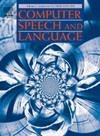Modeling correlated causal-effect structure with a hypergraph for document-level event causality identification
IF 3.4
3区 计算机科学
Q2 COMPUTER SCIENCE, ARTIFICIAL INTELLIGENCE
引用次数: 0
Abstract
Document-level event causality identification (ECI) aims to detect causal relations in between event mentions in a document. Existing approaches for document-level event causality identification detect the causal relation for each pair of event mentions independently, while ignoring latent correlated cause–effect structure in a document, i.e., one cause (effect) with multiple effects (causes). We argue that identifying the causal relation of one event pair may facilitate the causality identification for other event pairs. In light of such considerations, we propose to model the correlated causal-effect structure by a hypergraph and jointly identify multiple causal relations with the same cause (effect). In particular, we propose an event-hypergraph neural encoding model, called EHNEM, for document-level event causality identification. In EHNEM, we first initialize event mentions’ embeddings via a pre-trained language model and obtain potential causal relation of each event pair via a multilayer perceptron. To capture causal correlations, we construct a hypergraph by integrating potential causal relations for the same event as a hyperedge. On the constructed event-hypergraph, we use a hypergraph convolutional network to learn the representation of each event node for final causality identification. Experiments on both EventStoryLine corpus and English-MECI corpus show that our EHNEM model significantly outperforms the state-of-the-art algorithms.
利用超图建立相关因果效应结构模型,进行文档级事件因果关系识别
文档级事件因果关系识别(ECI)旨在检测文档中事件提及之间的因果关系。现有的文档级事件因果关系识别方法是独立检测每一对事件的因果关系,而忽略了文档中潜在的相关因果结构,即一因(果)多果(因)。我们认为,识别一个事件对的因果关系可能有助于识别其他事件对的因果关系。鉴于这种考虑,我们建议用超图来模拟相关的因果结构,并联合识别具有相同原因(结果)的多个因果关系。具体而言,我们提出了一种用于文档级事件因果关系识别的事件超图神经编码模型,称为 EHNEM。在 EHNEM 中,我们首先通过预训练的语言模型初始化事件提及的嵌入,然后通过多层感知器获取每个事件对的潜在因果关系。为了捕捉因果相关性,我们将同一事件的潜在因果关系整合为一个超边,从而构建一个超图。在构建的事件超图上,我们使用超图卷积网络来学习每个事件节点的表示法,以进行最终的因果关系识别。在 EventStoryLine 语料库和 English-MECI 语料库上进行的实验表明,我们的 EHNEM 模型明显优于最先进的算法。
本文章由计算机程序翻译,如有差异,请以英文原文为准。
求助全文
约1分钟内获得全文
求助全文
来源期刊

Computer Speech and Language
工程技术-计算机:人工智能
CiteScore
11.30
自引率
4.70%
发文量
80
审稿时长
22.9 weeks
期刊介绍:
Computer Speech & Language publishes reports of original research related to the recognition, understanding, production, coding and mining of speech and language.
The speech and language sciences have a long history, but it is only relatively recently that large-scale implementation of and experimentation with complex models of speech and language processing has become feasible. Such research is often carried out somewhat separately by practitioners of artificial intelligence, computer science, electronic engineering, information retrieval, linguistics, phonetics, or psychology.
 求助内容:
求助内容: 应助结果提醒方式:
应助结果提醒方式:


